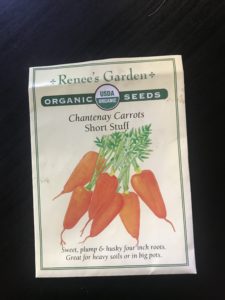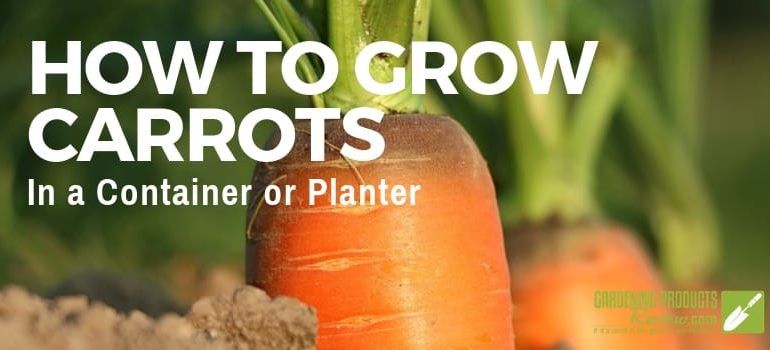How to Grow Carrots in a Container or Planter
We independently evaluate all recommended products and services. If you click on links we provide, we may receive compensation.
Can you grow carrots in a container or planter (read: not directly in the ground)? Yes, you can!
In the video below, I show you how I grew several different types of carrots in a 2′ x 8′ Elevated Cedar Planter Box from Gardener’s Supply Company. I cover:
- choosing the right carrot varieties
- sowing carrot seeds
- thinning seedlings
- soil and moisture requirements
- harvesting
You’ll find a brief summary of the main points in the written description below the video, as well as a list of recommended carrot varieties.
Most varieties of carrots need room to grow (they can get over 12 inches long) and elevated planters are generally not deep enough. So the solution is to use specific kinds of carrots – here are some of my favorite shorter carrot varieties (links will take to you to where you can buy the seeds):
Carrots in my elevated planter
Danvers 126 Half Long from Baker Creek Heirloom Seeds
Bolero Nantes from Renee’s Garden Seeds
Short Stuff (Chartenay Carrot) from Renee’s Garden Seeds
Romeo (Round Baby Carrot) from Renee’s Garden Seeds
Other Good Options
Hercules (about 6 1/2-7″ long) from Johnny’s Selected Seeds
Babette (French baby carrot) from Renee’s Garden Seeds
Oxheart (large, heart-shaped carrot) from Baker Creek Heirloom Seeds
Chantenay Red Cored carrot from Botanical Interests
A popular small, round carrot is available from different sellers: Baker Creek Heirloom Seeds calls it Parisienne, Sustainable Seed Company spells it Parisian, and others refer to it as Paris Market.
Carrot Tonda di Parigi (Italian for “Round of Paris”) – a round carrot from Botanical Interests
Carrot Scarlet Nantes – another red carrot from Botanical Interests
Carrot Baby Little Finger (only 3″!) from Botanical Interests
Carrot Cosmic Purple from Botanical Interests
How to grow carrots in a planter
Make sure you’re growing carrots during the right time of year, with the right potting mix, and using the right kind of carrots.
Use the right soil and seeds

Carrots tend to get pretty long, and they need loose soil with no sticks or rocks (or they’ll branch, bend, stop growing and/or stick out roots in all directions). An organic potting mix is preferable since you will hopefully be eating the fruits of your labor!
See above for the recommended kinds of carrots – we chose those that would have room to grow in an elevated planter, such as baby carrots, round carrots, and shorter ones such as Danvers Half Long or Short Stuff. Some of these would also be good options for growing in a container (provided that it’s at least 6 inches deep).
The potting mix needs to be moist, and it needs to stay consistently moist.
Since carrot seeds are so small, you can buy pelleted seeds so that you can see them and spread them out better. Make sure that there is a thin, moist layer of potting mix over the seeds once they are sown.
Carrots grow best when they’re spaced about an inch or two apart, so either use seed tape when you sow them or thin them out as they grow.
The carrots listed here should take about 75-90 days to reach maturity – look at your seed packet to check specifics for the type that you grow.
If your round carrots are not round (like the one in the video), they’re probably not getting enough moisture, and they’re elongating to try to get more water.
Know your planting season
The elevated planter in this video is in Tucson, Arizona. The seeds were planted in October, and this video was shot in January, so they’re just about ready to be harvested. In other parts of the country (and world), this is not the ideal planting season for carrots. If you’re in a more northern climate, aim for early spring or early fall to sow carrot seeds regardless of whether you’re growing them in the ground, a container, or an elevated planter.
If you try to grow anything in an elevated planter in the south during the summer, the potting mix will dry out. Similarly, the contents of an elevated planter will freeze during the winter months in the north.

